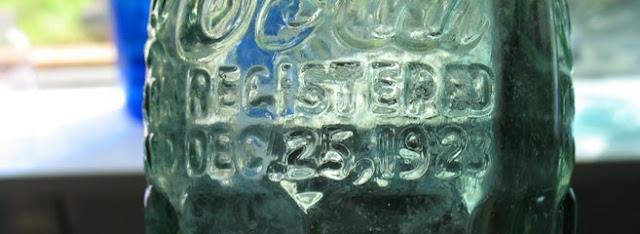Last year I was blissfully unaware of the disaster heading my way. I happily watched my cherries ripening. I anticipated spending hours pitting and freezing cherries which I would enjoy all winter long, as I had every other year. But this happy dream did not come true.
When I went out with my baskets to pick the cherries, they were all soft, they would disintegrate as I pulled them off the stems. Huh? How could that be? When squeezed into the cherry pitter, juice would come out little holes in the cherries. Huh? What's going on? Finally I see a little white worm squeeze out of a cherry. WHAT?? Worms in my cherries!!!!!!! Impossible! Very upset, I threw the whole batch away. ( I didn't even want to THINK about the cherries I had been enjoying on my granola every morning). When Ted got home I showed him my findings. He picked cherry after cherry, pulled them open, and found each one full of little white worms. A total loss. Could this be medfly? We went to the internet and learned about a recently discovered drosophila (in CA that is). We collected a sample and Ted took them to the ag commissioner. The find was confirmed by CFDA. My cherries were all infested with the maggots of the spotted wing drosophila.
Then my raspberries became infested. Luckily apricots, blackberries, and strawberries remained unaffected.
Now another cherry crop is on the tree. In April my neighbor and I (her cherry tree leans over my fence) began to plot strategy. I looked around on the internet and found two good websites http://www.ipm.ucdavis.edu/EXOTIC/drosophila.html and http://ucanr.org/blogs/strawberries_caneberries/index.cfm.
The bait suggested by the blog uses this recipe- 1.5 C water, 4 t sugar, .25 oz yeast (2.25 t).
I put some of this bait into a clear plastic frozen grape juice container at the beginning of April. I hung the container in a cherry tree. Fifteen minutes later I went back to check on the trap. It had dozens of SWD fruit flies in it. Oy. What a disaster appeared to be heading our way. I
 put out more traps.
put out more traps.In my experience so far this spring, clear plastic seltzer bottles work best for traps. I put 2 little holes (about .25 inch sq) about one inch from the bottom of the trap, fill with about an inch of yeast solution, and hang in the tree. I've tried milk jugs, but the flies definitely prefer the clear plastic containers. Also I catch mainly SWD in these traps. I've seen only one snake fly and one scorpion fly, although have caught some regular flies.
I'm sad to say that I'm pretty sure I made my SWD problem worse. I don't pick up all the fruit that falls off our enormous grapefruit tree. Last winter I noticed hordes of fruit flies on the fallen grapefruit, but I didn't think anything of it. But when I collected so many SWD in early April, I had an epiphany, and realized that the fallen grapefruit helped the flies to overwinter in my yard. The traps in the grapefruit are catching so many SWD!
Yesterday Ted and I checked the cherries. The ripest ones already were infested with SWD.
Now I see that the UCIPM site is recommending a different bait: a solution of 1/4 cup grape wine plus 1/4 cup water plus 3/4 teaspoon of molasses. I thought the blog had already figured out the best bait was the yeast bait, but I will try this bait too.
Oy.
Update: This bait is definitely nowhere near as good as the original yeast bait, SWD also gets into the blackberries and strawberries. Even with a good sanitation problem, we loose tons of fruit to SWD each year.

No comments:
Post a Comment